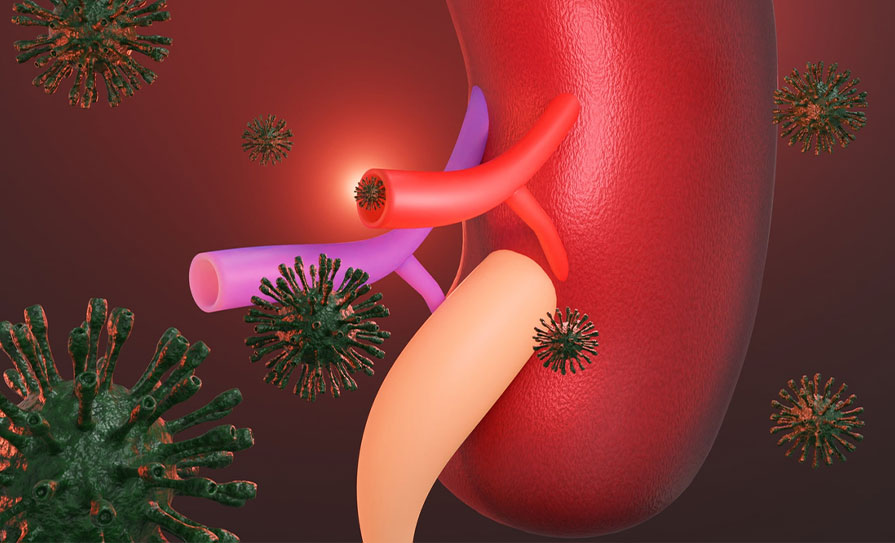
Prof Sam Kant, Consultant Nephrologist, University Hospital Cork, delivered a comprehensive update on the current evidence and best practice guidance in the management of hyponatraemia at the Irish Nephrology Society Annual Scientific Meeting 2024. Referencing the recently published “two trials that said we can forego slow correction”, Prof Kant warned against “taking up sensational medicine really fast”. He noted some of the interventions “that we thought would work, but didn’t” during the Covid-19 pandemic, and said, “I think we should slow down and think about what it [the data] really means.”
Beginning with a practice essentials update, Prof Kant discussed anti-diuretic hormone (ADH)-mediated thiazide-induced hyponatraemia and “some interesting things” in the literature. He presented an overview of the pathophysiology of the condition, and noted “it’s actually the prostaglandin transporter which is the problem”, with reference to recent findings. “It’s something to think about, it’s also another mechanism,” he said. “Yes, ADH is part of that, but it could be prostaglandin-mediated with a possible variant in the solute transporter 2A1.”
Attendees then heard that compared to standard thiazide product information – which estimates the risk of hyponatraemia at one in 10,000 – real world data would suggest a risk of almost 4 per cent for patients starting on the treatment. “With initiation comes risk”, Prof Kant said, and reinforced that although the risk is highest at commencement, “it doesn’t really go away, even after the two years” for many patients.
Prof Kant then moved on to present the data now supporting the hypothesis that “hyponatraemia may be a definite risk for osteoporosis”. He referenced mouse models showing that the condition “elicits changes, even at gene expressions levels”, and described the activation of osteoclasts with higher lysosomal activity in low sodium environments. “The link is there,” he concluded, “I think it needs to be further evaluated.”
Moving to the core theme of Prof Kant’s talk, he updated colleagues on the history and clinical presentation of osmotic demyelination syndrome (ODS). This is associated with rapid correction of hyponatraemia, and is characterised by neurological involvement related to cerebral apoptosis and myelinolysis secondary to osmotic stress. He presented the seminal data that established the association between ODS and rapid sodium correction, as well as further studies that later emerged to verify the relationship, and also link hyponatraemia with hypokalaemia.
“Is 2023 really going to be the year slow correction is offended?,” he asked. Prof Kant returned to two studies that were published last year and challenged a slow approach to hyponatraemia correction. The ‘Toronto study’ – a multicentre cohort investigation of patients admitted with hyponatraemia at five academic hospitals in Toronto, Canada – concluded that ODS was very rare, despite rapid sodium correction being a common practice. Analysing the study limitations, Prof Kant noted several, including that the researchers “really relied on MRI evidence” in their methodology. “The patient might be symptomatic, but they might not have evidence of ODS on MRI, which actually appears a few days later,” he said.
Moving to the ‘Boston study’ – a retrospective observational study at two institutions in Boston, Massachusetts, US – “that found slow sodium correction was associated with higher mortality”, Prof Kant warned “the devil is in the detail”.
“We can see that a high number of the patients had comorbidities associated with higher mortality and they [researchers] never actually corrected for this…. Again, they were very reliant on diagnostic codes and MRI imaging. They don’t have any data on readmissions, and of course ODS is rare, but it was 1 per cent in patients whose sodium was less than 110. If you look back, there’s actually another study from the same institution over the same time period that actually showed there was a higher number of ODS cases. They did a proper chart biopsy trying to find cases that looked like ODS in the first place.”
Prof Kant proceeded to analyse Scandinavian and other research, before discussing ways to manage syndrome of inappropriate ADH (SIADH). “In the vast majority of patients, fluid restriction really doesn’t work,” he said, and detailed alternative treatment options, including salt tablets and furosemide. Delegates also heard that using urea, which is “a very potent osmolyte when it gets to the renal tubules”, can “work really well”, but may not always be tolerated. High protein supplements were also proposed as a management strategy, with supporting research, “because protein does metabolise into urea and elicit a similar effect.”
Acknowledging that no dose guidance exists for tolvaptan, Prof Kant cited research that found a lower dose of the drug “is equally efficacious as the 15mg dose and is associated with lower rates of over-correction”. He also noted that although correction is achieved more quickly, “tolvaptan does have a higher rate of over-correction in comparison to urea.”
Concluding, Prof Kant referred to SGLT2 (Sodium-Glucose Transport Protein 2) inhibitors and presented Dutch data linking the therapy with improved outcomes.





Leave a Reply
You must be logged in to post a comment.